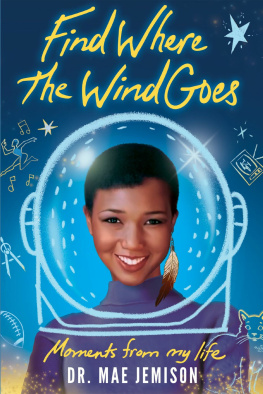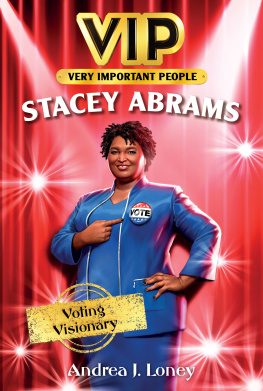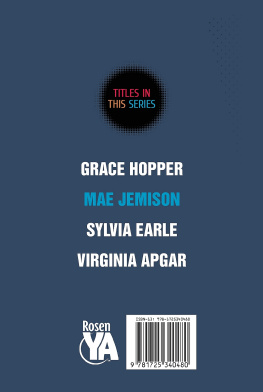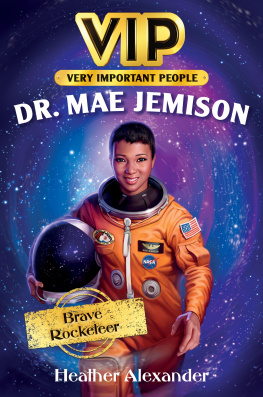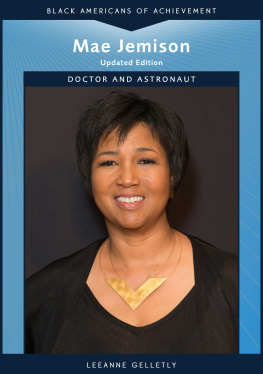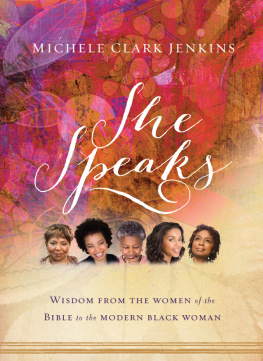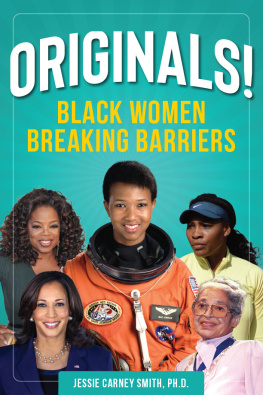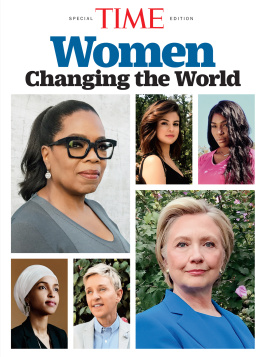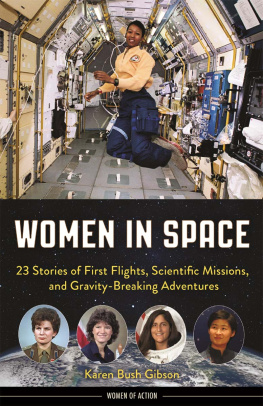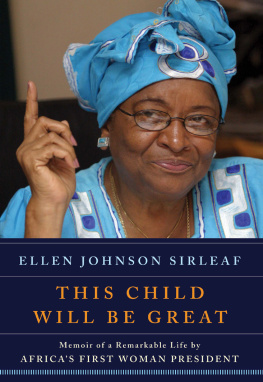
Second Edition
DR. MAE JEMISON
SIGNAL HILL ROAD PUBLISHING, LLC
Published by
SIGNAL HILL ROAD PUBLISHING, LLC
signalhillroad.com
2020 by Mae Jemison, M.D.
All rights reserved.
No part of this book may be reproduced in any form or by any electronic or mechanical means, including information storage and retrieval systems, without permission in writing from the publisher, except by a reviewer who may quote brief passages in a review.
ISBN-13: 978-1-63725-000-6
BIOGRAPHY & AUTOBIOGRAPHY
Adventurers & Explorers / Women / African American & Black
/ Science & Technology
YOUNG ADULT NONFICTION
Biography & Autobiography / Science & Technology / Women
Written by Mae Jemison, M.D.
Design and Layout by Jason D. Batt
Art by StudioNYC
PRINTED IN THE UNITED STATES OF AMERICA
S econd Edition
DEDICATION
I wrote this booka collection of moments from my life growing up, not really an autobiographyin response to a question I am frequently asked, What advice would you give to my teenage son or daughter who wants to ?
Firmly believing that example and experience are the best teachers, the advice I would give to a teenager is very much the same that I would give to a younger child or an adult. It is the same my mother gave to me Pay attention to and learn from all the adventures you have in life, big and small, for within each there is a valuable insight to help you throughout your life. And, when the lessons that originate from satisfying your curiosity, appear to conflict with maintaining your dignity, they are particularly important. It seems to me that these curiosity-dignity tension-filled events reach a peak when we are teenagers, age-wise, or adolescents in terms of our experience in a situation. We know quite a lot, but not so much to restrain us from taking risks, pushing boundaries, or making mistakes from which we rebound stronger, wiser, and more resilient.
These are my reflections on life events that I believe my 16-year-old self would have wanted to know. Though focused on young adults, I wrote this book for all of those who, like me, constantly have the answer to a life problem or direction right at their fingertips. While we may only manage to grab and hold onto a fragment, still we continue happily forward. I hope these stories and ideas are fun and enlightening for those young and old, girls and boys.
Here are moments when satisfying my curiosity seemed squarely at odds with my supposed dignity. So, I dedicate this book to the friends in my life who, with humor, always embodied the beautiful balance of dignified curiosity: Tiger, Pink, Gray, Pili, Mac, Lil Mama, and Sneeze.
Table of Contents

WIND CURRENTS
WHO I INTENDED TO BE
W hat do you want to be when you grow up?
Looking around the room, I saw the magical board with the colorful felt sun, flowers, and trees that stuck without glue, and I thought, I know the answer to that. I waved my hand excitedly, arm straight up in the air. I could barely hold my response inside while the teacher called on the other five and six year olds. They said fireman, police officer, mailman, teacher, mother. I had my answer. It was none of these.
Finally, the teacher called on me. Without hesitation, I answered emphatically, I want to be a scientist.
The teacher looked puzzled and slightly taken aback. I cant say I know exactly what was wrong with my answer. Perhaps as my teacher looked around the kindergarten at McCosh Elementary School, on the southside of inner-city Chicago, she was just surprised. Maybe she was thrown off by this skinny, brown-skinned girl with short hair, who despite her babysitters best efforts, might come to school a bit disheveled. Though obviously quite brightthis girl could already read and knew all her numbersshe refused to act like a little lady on the way to school with her older brother and sister or anywhere else. Maybe the teacher felt it was her job to help her students set realistic goals. In 1961, becoming a scientist was not in the realm of possibility for most peopleand certainly not for a little colored girl. (African Americans were still called and called ourselves colored back then.) So the teacher replied, Dont you mean a nurse?
To be honest, at that moment I did not worry about her thoughts. I was just plain indignant. She doubted me, as if I didnt know what a scientist was, or worse, that I was incapable of becoming one. I simply put my hands on my hips and said, No, I mean a scientist!
Years later, after I had earned a bachelors degree in Chemical Engineering and was in medical school, I slipped and told a friend of a friend that I was going to apply to be an astronaut. He laughed loudly and said, You mean like the guys who go to the moon? Give me a break.
Today, looking back at my life growing up and forward toward future possibilities, Im struck by how the flow of life events is like the wind.
Events that change us and redirect our lives may begin very subtly, much like small changes in air temperature. There is a slight rustle of tree leaves, yet if one observes the accompanying signs, one can forecast the next days weather. The hint of a breeze that kisses your cheek may turn into a full-fledged hurricane that uproots trees and old ideas. Wind can flood the shoreline and change the course of rivers. A miniscule drop in atmospheric pressure may signal a tornado that in one intense minute, knocks over buildings and demolishes blocks to the imagination. The next second, the wind is gone, but your path in life is altered forever.
Life stretches in front of and behind us, made up of the actions we and others took. I wonder: Is it possible to see the trends? The small stirring of air as I waved my hand back and forth in kindergarten created only a slight breeze. What became of that breeze?
What currents in my life began just then? Where did that wind lead?
My story, to date, is not a mystery. You may even know the ending, up to a point. I say up to a point because I am still alive. My life, I imagine and hope, continues to hold secrets, new challenges, varied opportunities, important lessons, good times and unforeseen directions.
My career has been in the physical sciences and technology, but also in the social sciences. I got through elementary school; the riots in the Chicago ghettos in the 1960s; short natural hair combined with puberty (whew!); integrated high schools, whether that cute football player liked me as much as I liked him; chemical engineering at Stanford University in California and medical school at Cornell University in New York City; Cambodian refugee camps; questioning whether my country loved me as much as I was supposed to love it; the reality of being a doctor in West Africa; adjusting to summers in Houston, Texaswell, just Texas, period; astronaut training, military pilots, and spaceflight; learning about death; relinquishing the dream to be a fashion designer, an architect, and professional dancer; crushes on famous, fictional, and not-so-famous men; and quasi-celebritydom. I went through all of that seeking to find where the wind goes. And I am still not sure.

